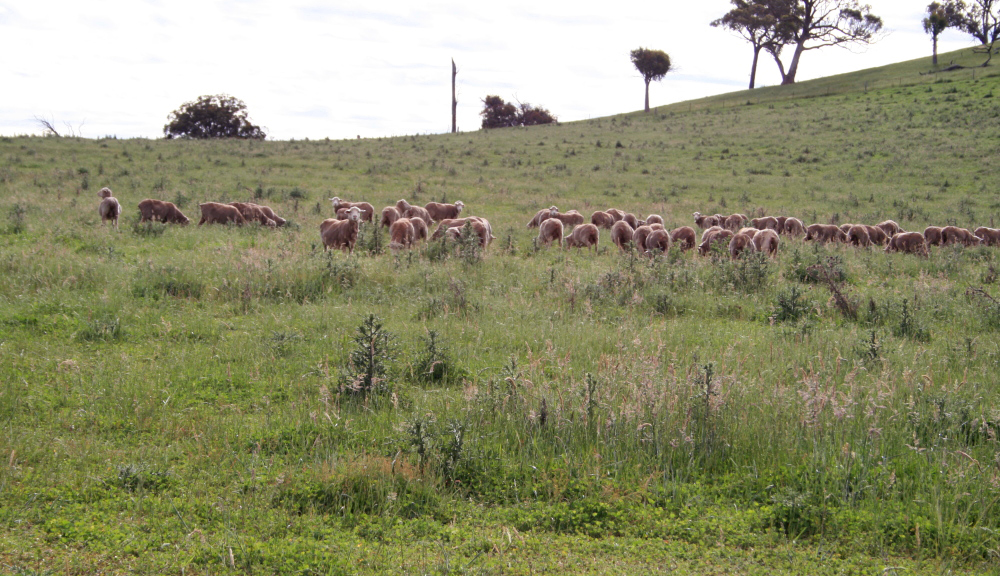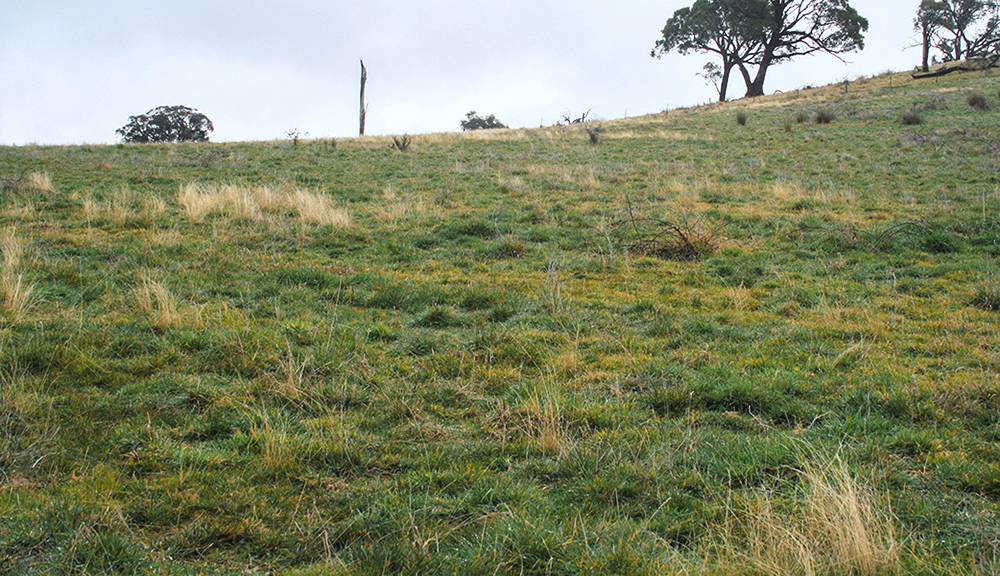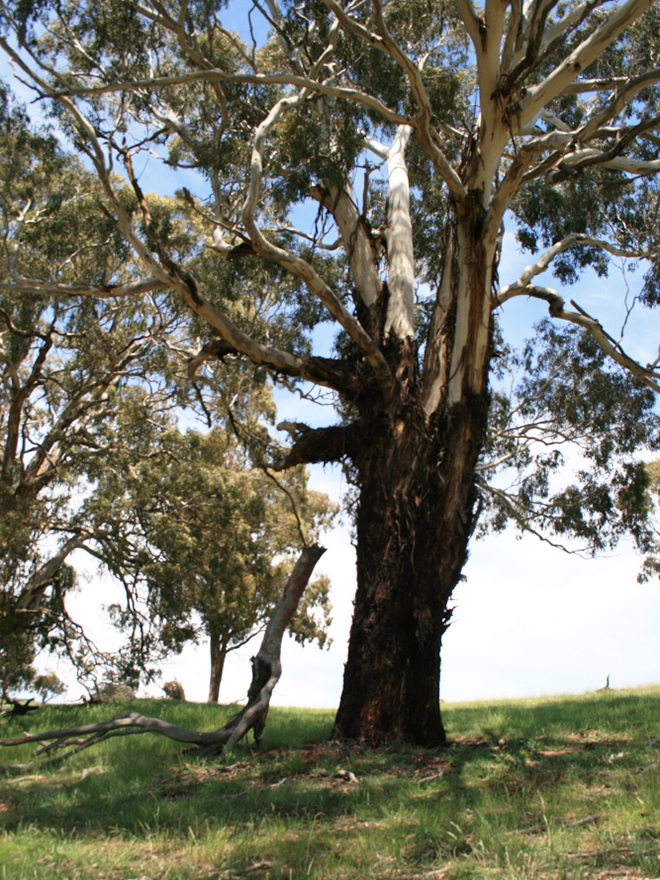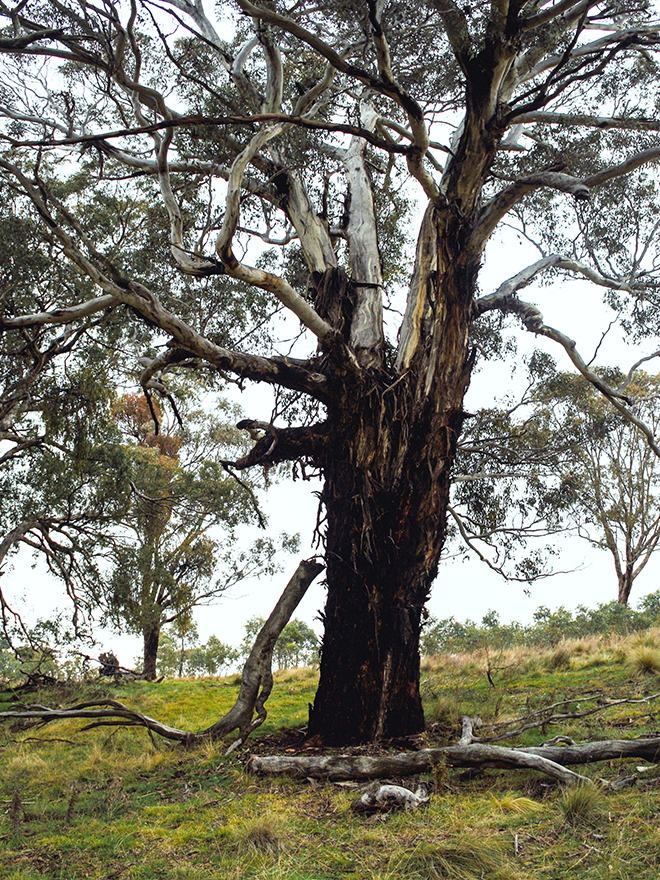Grant and Lizzie Molloy, Dairy Park
Mandurama, NSW
In the Central Tablelands of NSW, Grant and Lizzie Molloy operate the 1,100 hectare Dairy Park. The Molloys run sheep and beef cattle, but they have also diversified their business with a successful farm stay venture. They appreciate the production benefits that their environmental stewardship brings.
“We’re getting a lot of natural tree regrowth now, just from seeds coming out of trees,” Grant says, “And that’s all over the farm. And that’s starting to actually give us a huge shading effect… and it’s on our western slope, which is obviously a hot slope, which is now actually helping cool all our western side of the farm. It’s quite intriguing, and we’re seeing a little bit more moisture because of that, I think, as well as rainfall. It’s capturing it more.”
“This is, yeah, amazing. This picture,” says Lizzie, comparing the photo of the old paddock tree captured in 2008, with the one taken fifteen years later.
“Yeah, amazing on two fronts,” says Grant. “See that? …the regen is fantastic. But see that stick we’re talking about, it has not perished… Yes, that’s right, [this tree is near the end of its life]. Which is quite a nice thing, too, because now it’s got all those young ones underneath it. It’ll turn into hollow logs, and birds will live in it, and lizards and all that stuff.”
“We've known there's been regrowth on the farm. But to see a before photo and then an after photo, it just really confirms that the regrowth is happening. On our shift.” – Lizzie Molloy
The Molloys also employ pasture management strategies that encourage native grass species. The photos below demonstrate how their management has transformed one of their paddocks.
Pasture dominated by clover in 2008.
(Photo: Molloy family)

Mixed pasture at the same site in 2024.
(Photo: Kate Sherren)

Reflecting on the pasture photo from 2008, Grant comments, “Where the sheep are, it’s clover everywhere and it’s really quite a monoculture type of paddock. Whereas in [the 2024 photo] we’ve got a huge variety of grass species there.”
“Where all that clover is, with the sheep,” says Lizzie, “give that a few months, and a lot of that would have been bare soil, because the clover just dies out, and then there’s nothing. But in [the 2024 photo] we’ve got a heap more perennial grasses too.”
Reflecting on the process, she adds, “Every day that we decide, no we won’t graze that, or we will graze that, will have an impact on the landscape.”
“I think it can show the world that you can sort of level the extremes, you know. It will be less extreme on our farm than [for] some people … that do set stocking, for example, and we’ll get away with it. Get away with the drought a bit more easily because we’ve got more planning. We’ve got more perennial grasses, more deep-rooted plants. The water cycle within our farm is improving, and therefore we won’t suffer as badly from the extremes as people who don’t farm our way. That’s what I think about it.”
This story is a case study undertaken by Professor Kate Sherren, Dalhousie University, NS, Canada, with support from the Australian National University.
Share your story of managing natural assets on your farm
Help give other farmers an insight into what you’ve tried on your farm to work towards a sustainable farming future. Have you planted trees or fenced a dam? What have you noticed? What’s worked and what hasn’t?
Submit your story


